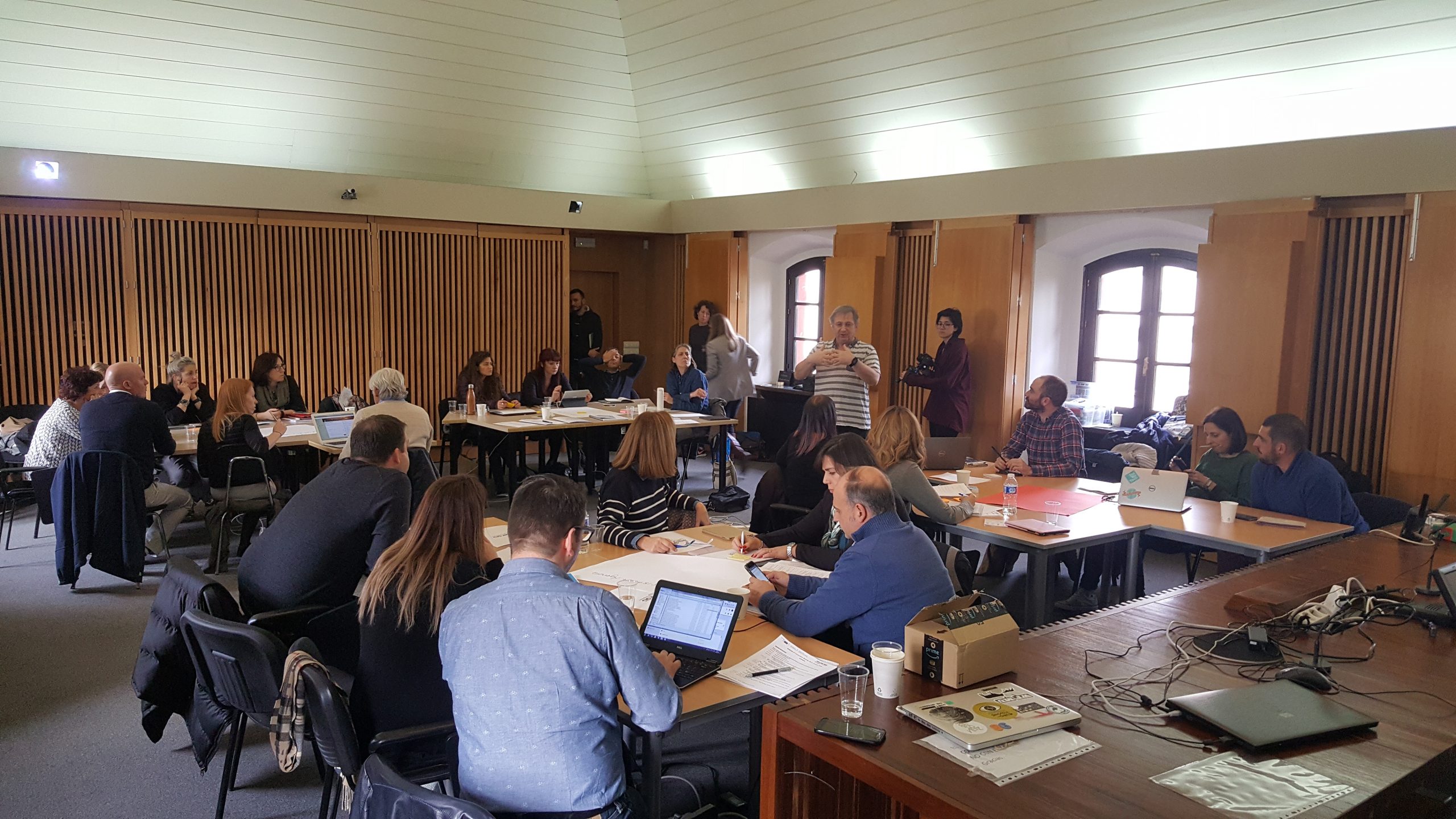What is social innovation? Is it about finding imaginative solutions for social problems? About subverting power relations? About bringing systemic change? Is it the same that social entrepreneurship? Trying to define social innovation was one of the challenges NEMESIS partners faced at our second project meeting, held in Seville.
if disparity of definitions is a problem when talking about social innovation, the opposite is true when referring to social innovation education: there is no definition! Our definition-in-progress is “a combination of philosophy, values and skills that we think young people need to know to become the social innovators of the future”, but this is open to change along with project’s development.
Social entrepreneurship in education
Meeting was held in the grounds of the Monasterio de La Cartuja, an ancient monastery where Cristóbal Colón (Christopher Columbus) used to stay at when in Seville. We did have our own guest of honour: Margherita Bacigalupo, a researcher from the Joint Research Center and one of the authors of the EntreComp Framework, a document by the European Commission aimed at defining what entrepreneurship as a competence is, establishing a bridge between the world of education and work.
The framework builds upon a broad definition of entrepreneurship that hinges on the creation of cultural, social or economic value. It thus embraces different types of entrepreneurship, including those that are beneficial for the community socially or culturally, rather than only focusing on economic benefits.
Having the different values of entrepreneurship made explicit resonated with the participants, since the tension between the social and the business side of entrepreneurship was apparent during the whole meeting. Further to that, Margherita called our attention to yet another important issue: gender. She pointed out there is no reference to the notion of leadership in the EntreComp document, since it tends to be associated with the individual and “entrepreneurship is not an individual competence”. Furthermore, the notion of the “solo hero” can be off putting for girls, who are usually more community oriented.
Collaborative work
Besides definitions, a lot of other work was also undertaken at Seville (there is nothing like a face to face meeting to collaborate and move forwards ). Different methodologies – user personas, OPERA and world cafe– were used to identify what NEMESIS can offer to different stakeholders (teachers and educators, innovators, policymakers, parents, students), unveil our own expectations about the project, and outline the teachers’ training programme, amongst other things.
We're back! Thinking, planning, plotting and working towards #EntEd one post-it at a time 😉 #education #innovation #SocialInnovation pic.twitter.com/Zd2b0UWVho
— NEMESIS – Social Innovation Education (@nemesis_edu) January 31, 2018
Interesting questions arose too: what is the best way to motivate teachers to apply social innovation? Which factors account for the success of the innovation models across different schools? What role do cultural differences play? What training is needed for schools and educators? How can someone teach maths and develop social skills at the same time?
Answering these questions, an many others, is what NEMESIS is all about.

